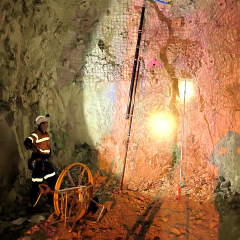 JKTech Comminution Analyst Matt Weier will be travelling to Santiago for Procemin 2018 to present his paper Accuracy of the Bond Ball Mill Test and Its Implications.
JKTech Comminution Analyst Matt Weier will be travelling to Santiago for Procemin 2018 to present his paper Accuracy of the Bond Ball Mill Test and Its Implications.
Procemin-Geomet is a forum where professionals can learn and analyse best practices and innovations related to mineral processing and geometallurgy in metallic and non-metallic mining. The conference gathers prominent executives, professionals and academics in one place.
Conference Abstract
Since first being introduced by F Bond in 1952, the Bond Work Index, derived from the Bond Ball Mill (BBM) Test, is a measure of the resistance of the material to crushing and grinding and can be used to determine the grinding power requirement for ball milling. Despite being classified as a standard test, there is anecdotal evidence of variability in BBMWI results between different laboratories for the same ore sample.
As a quality control measure JKTech runs regular comparative testing programs for JK Drop Weight and SMC licensed testing facilities to provide clients with confidence in the consistency in the results irrespective of which licensed laboratory undertakes the test. During the last of these testing programs JKTech also offered to supply BBM samples for comparative testing to quantify the experimental variation present in the BBM test. The testing program involved duplicate samples being tested at 34 laboratories, with some laboratories using multiple mills to give a total of 38 duplicate results. The program involves statistically analysing the results to help identify and correct any out of specification testing. The population of results was analysed, giving an average work index of 15.39 kWh/t with a 95% Confidence Interval of ± 2.13 kWh/t. As such the effective error for the BBMWi test was determined to be ±13.8%.
The results of the testing program will be examined in terms of accuracy and determined error. This paper will also examine the equipment aspects and measurements involved in the BBM test to identify possible causes of the variation as well as steps to reduce it. Finally, simulations using the lower and upper ends of the reported values showed that the implications on ball milling costs and throughput estimations could be equally significant.



